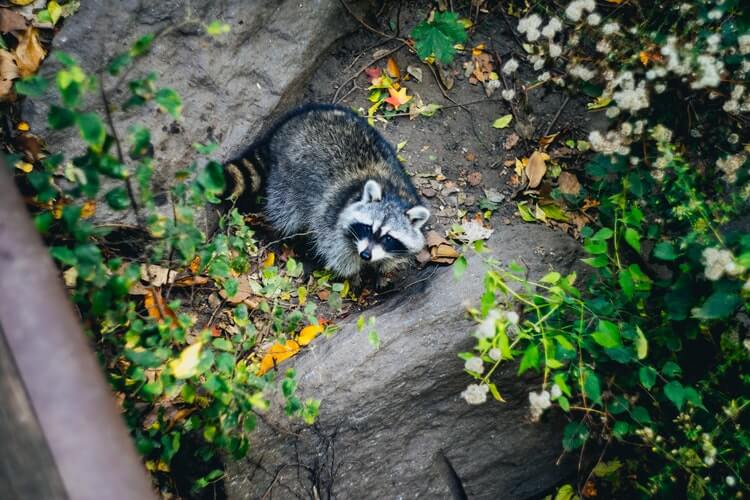BackRaccoons in Your Home: Everything You Need to Know

Raccoons can be cute (sometimes) and even resemble your family pet, but the potential for damage and harmful diseases are enough to make us want to keep them away from our homes. Besides being destructive and messy intruders, they are known to carry several bacterial diseases and parasites such as rabies, roundworms, and salmonella.
Although they’re wild, it’s not uncommon to see them become more comfortable in urban areas. In the wild, they prefer to make their dens in hollowed out trees, rock crevices, or other animals’ nests, but as their food and shelter sources become compromised, they’re forced into our neighborhoods and even inside our homes — and they especially love our attics and chimneys.
But don’t worry! We’ve got you covered with everything you need to know about raccoons and your home.
How to spot a raccoon in your home:
- Noise. Raccoons make various noises. You can often hear them crying, grunting, barking, growling, and even chittering when feeding or feeling threatened. However, you likely will only hear these outside when the intruder leaves your home. Inside your home, you may hear scratching, gnawing, or small footsteps.
- Tracks. Raccoon tracks are small, flat-footed paws with 5 toes. The hind paws typically look like human footprints with long toes. Check dirt or dust in and around your home for signs of them.
- Scat. They typically leave feces at the base of trees or on logs, big rocks, woodpiles, or the roof. They typically claim one area as their “bathroom,” so you’ll often find a pile of feces in one corner of your attic.
- Mess. These guys are messy eaters. You’ll likely find remnants of food like bones and scraps where they’ve been residing, along with the materials they use to build their nests like twigs, leaves, and insulation. There’s typically a nest of babies along with an adult raccoon, so be especially on the lookout for the little ones.
- Damage to your home. Since raccoons aren’t small like mice or rats, they require much larger holes through which to enter your home. While finding a vulnerable spot in your home to enter, they can bend gutters, chew holes in siding, rip off shingles, destroy insulation, and chew on wires. Trust us when we say you can tell they’ve been in your home.
- Damage outside. They’re notorious for knocking over trash cans, but they can also be seen knocking over bird feeders and damaging crops. If you notice signs of them outside of your home, take extra precaution to ensure they don’t damage your home (or continue to damage your home).
How to prevent raccoons in your home:
- Hide your trash. Store trash cans and recycling bins indoors or in sealed areas such as sheds — but remember to lock it! Raccoons are very dexterous and can open unlocked doors even if they’re shut. Use animal-proof lids for trash days.
- Remove sources of food. Never leave pet food out overnight, and always keep it sealed inside. Remove bird feeders at night and always clean underneath them. Keep outdoor grilling and eating areas tidy, clear of crumbs and scraps.
- Eliminate potential shelter. Do you have any old, hollow trees in your yard? It might be time to cut them down before a raccoon makes its home inside. Search your property for rock crevices, logs, woodpiles, and other areas that may look like a cozy home to a raccoon.
- Seal entry points. Regularly inspect the outside of your home for possible entry points, such as holes in your roof or siding, loose shingles, and cracks. Always keep your chimney covered with a mesh cover or cap.
If you think you might have a raccoon problem, the most important thing is to allow a professional to handle it. Keep yourself and your family safe and healthy by keeping your distance from them.
Don’t wait! Call us today for a free inspection of the problem so we can provide you with an immediate solution and estimate. 706-979-2536